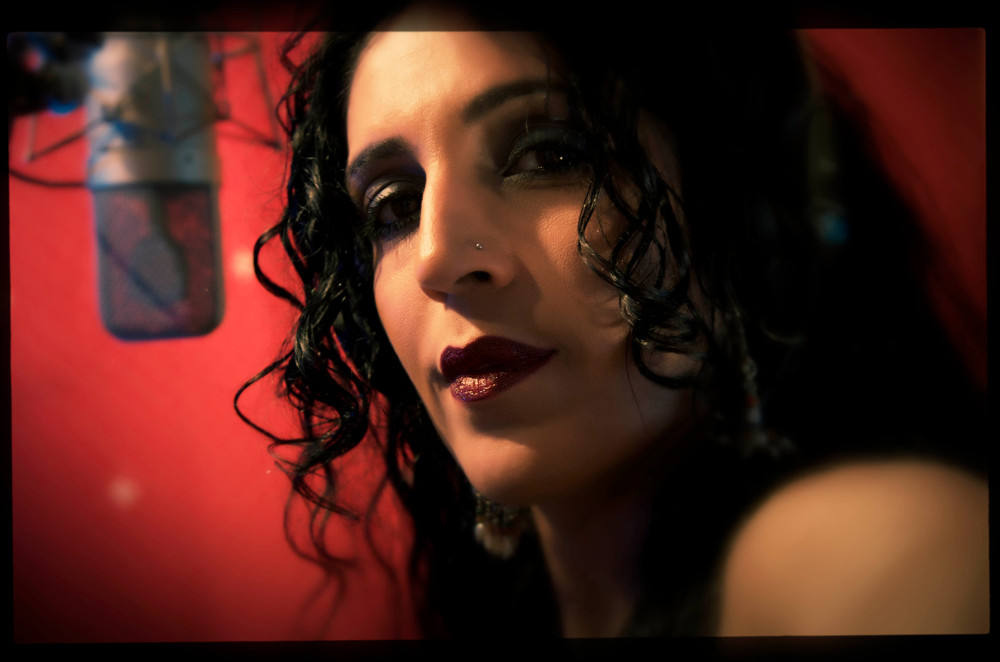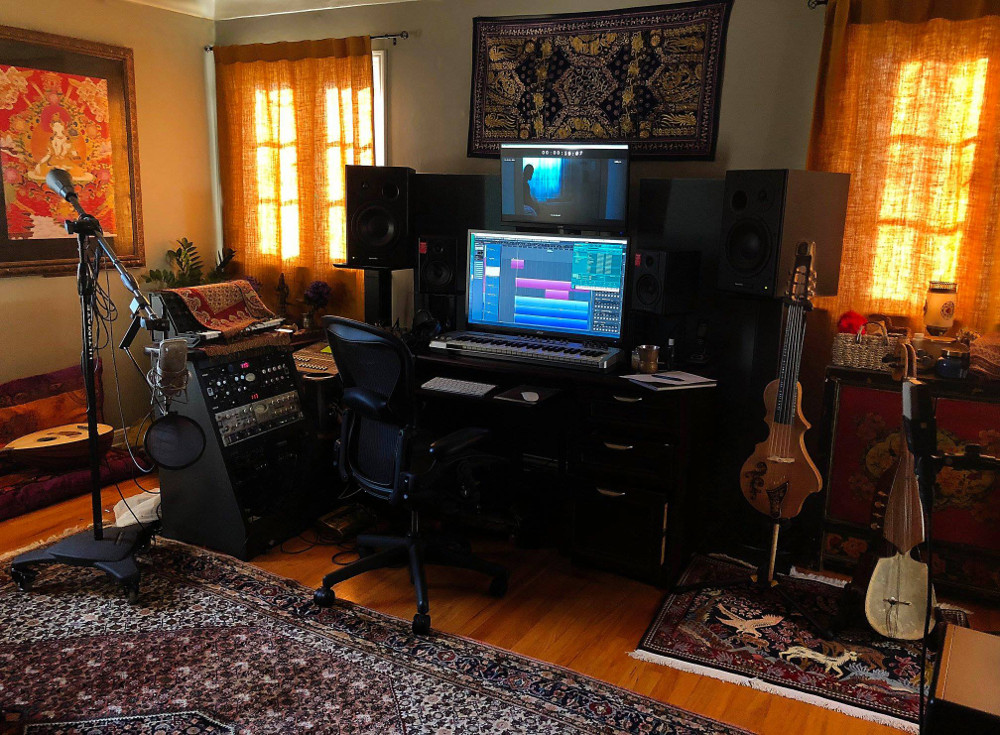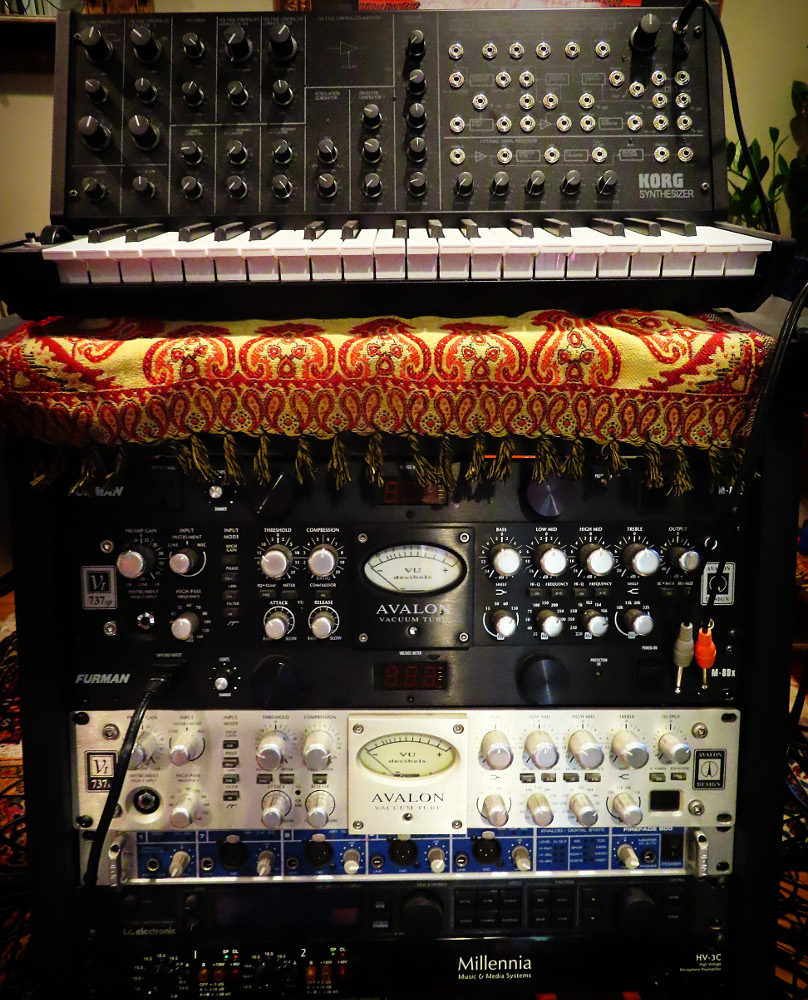How to Unlock New Sounds with Hybrid Synthesis — Studio Solutions from Azam Ali
A musical lifetime – that’s the only way to describe what Azam Ali has spanned.
Based today in Los Angeles, it seems as if this singer-songwriter/producer/electronic musician has traversed the universe in the pursuit of new sounds. By necessity, it all took place on Earth, even if the atmospheric signals of her upcoming full-length album Phantoms indicate otherworldly influences.
A native of Tehran, Iran, a child of a remote hill station town in India, an early student of the entrancing Santour (Persian Hammered Dulcimer), then trained in Western classical vocals, Ali springs from a singular background. Merge all that with her taste for ‘80’s and ‘90’s electronic/shoegaze from the likes of Massive Attack, Portishead and Cocteau Twins, along with classical and synth-heavy film soundtracks, and you could only come away with a melodic amalgam as yet unheard.
Until Phantoms, of course. Part of a progression that has seen Ali release 13 collaborative and solo albums, plus receive two Canadian JUNO Award nominations over a 15-year career, the lead single “Hope” is more than a hint of what’s to come from Phantoms, due out on August 9th. Darkly empowering, hypnotically rhythmic, gorgeously gritty, it’s a cinematic album that’s sure to see scores of streams, as well as get synched to soundtracks.
In SonicScoop’s latest “Studio Solutions,” Ali pulls back the curtain on the creative mindset that unfolded within her LA recording oasis for Phantoms. Along the way, she shares select music production techniques that allow her to capture the ideal balance between future and retro synths. Plus, her vocal tracking techniques will inspire new insights, no matter what the genre. Go ahead, immerse yourself.
“Hope” was the album’s first single:
I started writing and producing Phantoms in 2015 during my time off in between touring with my world/electronic band Niyaz. By then I had co-produced our last album doing the majority of the programming, so my confidence about performing and producing an electronic album completely on my own had grown tremendously.
Once I began, it came together very organically and became a cathartic, transformative experience because I witnessed a whole new artistic expression emerging.
What’s significant about this album is that it became a sort of pilgrimage of needing to define for myself what it means to be a female music producer, especially taking on the role of creating electronic music in such a male-dominated genre, and really in the end wanting to make a statement about what it is to be multidimensional female artist who refuses to be confined by a specific role or genre.
The concept behind Phantoms, in essence, is about how we develop multidimensional selves, a series of personas if you will, that enable us to navigate in a multidimensional universe and how we learn to move between them very fluidly. Over time, these personas become like ghosts that live within us…like phantoms.
It seemed like an appropriate title because as the album began to take shape, I realized that I was unconsciously reaching back into so much of the music from the ‘80s and ‘90s that had inspired my own musical journey and influenced my personal aesthetic. It may have been because it was during that period of my youth that I first became infatuated with technology and its immense power as both a destructive and creative tool.
Once the concept of the album materialized, I knew I wanted to create a sonic landscape that encompassed a constant balance between masculine edge and feminine etherealness. I wanted to create a seamless hybrid of grimy industrial textures, dirty ambience and beats, juxtaposed against beautiful gloomy synths and ethereal vocals to reflect the dichotomy of life.
My Studio:
I used to work in Pro Tools but then switched over to Nuendo 11 years ago because I found it to be a much easier platform for editing and the recording algorithm and conversion is superior to Pro Tools. And if you are a composer or record producer, you can appreciate that editing is a major part of producing music.
I am not a gear junkie in the conventional sense because I feel tremendously guilty if I have a synth or piece of gear in my studio that looks amazing, but goes virtually unused. Everything I purchase, I use on a regular basis.
My room which I share with my husband and musical partner in Niyaz, Loga R.Torkian is really more of a sanctuary. It is a sacred space we ensure we both have time to indulge in because it keeps us sane. It is home.
Studio Solution 1: Spectrasonics
Spectrasonics, I believe is essential software for any serious composer. As far as VST instruments go, they are by far the most superior. What earns my commitment to a particular software is how effortlessly it demands further exploration and experimentation, and after ten years I can tell you, I am still discovering what it can do.
When working with Omnisphere for this album, I rarely used the actual sampled sounds themselves as I find many of them to be very clean and I was aiming for more dirt and grit. I also like to manipulate the samples so those who know the software do not recognize the samples.
So I predominantly use the synthesized sounds, manipulated the waveforms and then used a lot of VST Plugins such as SoundToys and Waves. I took this approach for every song on the album but you can hear it very clearly in a track like “Tender Violet.”
Studio Solution 2: Neuman M 149 & Avalon Preamp
I paired these two together because after more than 15 years of experimenting with myriad microphones and preamps, my sacred formula for achieving the best vocal recordings have been with the Neumann M 149 and the Avalon VT-737SP preamp. I tend to have a buildup in my high midrange, which presents so many problems for most solid state preamps, but somehow these two are quite forgiving and give me the best results.
I will add that there is no singular, magical formula for recording vocals because every human voice is unique and harbors a vast range of nuanced frequencies. The real secret is finding the recording tools that are able to capture your particular magical frequencies.
The title track is the latest single from Phantoms:

Before Recording:
Studio Solution 3: Roland Juno & Korg MS-20
Once I wrote and preformed Phantoms, I felt there was a human touch missing in the spectrum of synthesizers.
Everything was programmed and quite mechanical, which was fine for the beats, but the string pads felt cold and void of emotion. At that point, I decided to replace some of those programmed synths with vintage instruments that would bring those string melodies to life.
My friend Rhys Fulber, a notable music producer of Front Line Assembly and Delerium, was kind enough to loan me his Roland Juno and Korg MS-20.
In all humility, I do not play the piano, so I knew I needed a proper keyboard player to bring those melodies to life. So I invited my dear, talented friend Gabriel Ethier, a wonderful piano and keyboard player from Montreal, to come and play the synth parts live.
What I was after which Gabriel pulled off beautifully was to use the MS-20 as a melodic percussive instrument. One technique he used on all the songs where you hear the MS- 20, particularly in the title track “Phantoms,” was to use ring modulation with the two filters in order to achieve that gritty sound. Towards the end of the track it can be heard very clearly. You can also hear it on “The Blue” and “Scattered Stars.”
As for the Juno, Gabriel did something very interesting which was to run it through the Roland PG-300 so that he could manipulate the sound while he was playing the keyboard parts. This is ultimately what gave it such an organic feel. You hear it most at the end of “Tender Violet.” It’s so warm and comforting.
In the end, I believe this was the magic formula for the album…a true hybrid and synthesis between an expression that is simultaneously deliberate and mechanical, yet arbitrary, vulnerable, and human.
Azam Ali’s Phantoms comes out on August 8th. Visit here to find the record. Upcoming live shows include DROM in NYC on August 16th, and the Teragram Ballroom in Los Angeles on August 25th.
Please note: When you buy products through links on this page, we may earn an affiliate commission.










